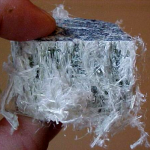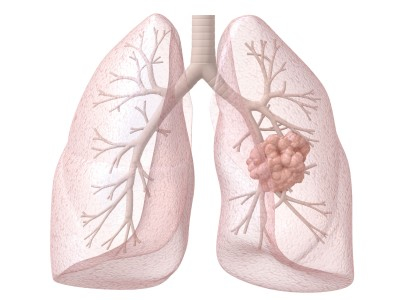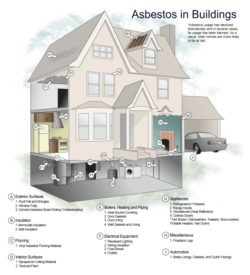Asbestos – The Hidden Killer

If you own, occupy, manage or have responsibilities for non-domestic premises which may contain asbestos you have a legal duty to manage the risk from this material.
There are three main types of asbestos still found in premises today. These are commonly called ‘blue asbestos’ (crocidolite), ‘brown asbestos’ (amosite) and ‘white asbestos’ (chrysotile). All of them are dangerous, but blue and brown asbestos’ are more hazardous than white, but unfortunately you cannot identify them by their colour.
Although it is now illegal to use asbestos in the construction or refurbishment of any premises, many thousands of tonnes of it were used in the past and much of it is still in place. As long as it is in good condition and is not being or going to be disturbed or damaged there is no risk. But if it is disturbed or damaged, it can become a danger to health, because asbestos fibres are released into the air and people can breathe them in.
Up to 1,500,000 commercial, industrial and public buildings in the UK are likely to contain asbestos materials. Unless this material is properly managed anyone who has access to the buildings, including employees, the public and building/maintenance workers is at risk from breathing in the life-threatening fibres of asbestos.
-
Asbestos in our lives
A ny building constructed before 2000 is thought to contain an ACM (Asbestos Containing Material) of one type or another. They are found in schools, hospitals, factories, public buildings even domestic properties, so asbestos has woven itself into our lives, but largely unseen.
The properties and versatility of asbestos made it an excellent building material. As a good thermal insulator it has been used to lag pipes and protect structural steelwork. It is also an excellent electrical insulating material and its high tensile strength has been used to give that strength to a wide range of other products such as gaskets. The long flexible fibres have been woven into cloth and rope used for fire protection and sealing of joints.
Add to all this the fact that it is highly resilient and does not degrade; it is not surprising it was used so widely. However, unfortunately it can also be deadly! Large numbers of people are now dying from past exposure to asbestos and will continue to do so unless action is taken.
-
Health Risks

E very week 20 tradesmen die from asbestos-related disease. If you carry out work on a building that was built or refurbished before the year 2000, you could have been exposed to asbestos, without even knowing it.
Asbestos-related diseases kill more people than any other single work related illness. Asbestos-related diseases can take 15-60 years to develop and there is no cure.
Asbestos-related diseases are currently responsible for more than 4000 deaths a year in the UK and the number is still rising. ACMs in good condition and left undisturbed cannot cause ill-health. The greater the disturbance of ACMs and the longer the duration, the greater the risk to health. -
Situation today
 I n the modern world there are many dangers about us, but we have strategies and codes to protect us; the Highway Code for example prevents thousands of road accidents, warning signs where high-voltage electricity is present – all are perfect examples of managing potentially fatal situations and asbestos is no different.
I n the modern world there are many dangers about us, but we have strategies and codes to protect us; the Highway Code for example prevents thousands of road accidents, warning signs where high-voltage electricity is present – all are perfect examples of managing potentially fatal situations and asbestos is no different.
We live with traffic, electricity and asbestos all about us. Asbestos that is in good condition should be left in situ. Seriously, damaged asbestos that can not be dealt with by any other means, must be removed by licensed contractors. As long as asbestos sites are regularly checked the threat to life will reduce over the coming years. But it is your responsibility if you manage or occupy non-domestic premises to keep your asbestos situation under control. The Asbestos Group will help you to comply with the new law and keep your workplace safe.
-
Effective Asbestos Management
“It is important that all ACMs are identified and then managed and reviewed on a regular basis.”
– Health & Safety ExecutiveI f it is decided to leave in place ACMs (Asbestos Containing Materials) or presumed that they are in good condition, a record of where they are must be kept up to date. Setting up a register of the location and condition of ACMs in buildings is important, also be aware that some hidden asbestos may be present.
You must make sure that everyone who needs to know about the asbestos is effectively alerted to its presence. You can label ACMs clearly with the asbestos warning sign. You will need to introduce a method that will ensure anyone who comes to carry out work on the premises does not start before they are given the relevant information on any asbestos present.
Some damaged asbestos can be made safe by repairing it and either sealing or enclosing it to prevent further damage. If this cannot be done easily you contact your local asbestos group surveyor at the earliest opportunity.
Make sure you have an effective plan for inspecting ACMs left in place, including any you have managed to seal or enclose. These should be inspected on a regular basis, every six to twelve months, depending on its condition and/or location.
We cannot stress the importance of an effective management plan detailing your asbestos situation. All staff, not forgetting new staff need to be made aware of the asbestos situation – and check that the arrangements to control the risk, set out in your plan.



